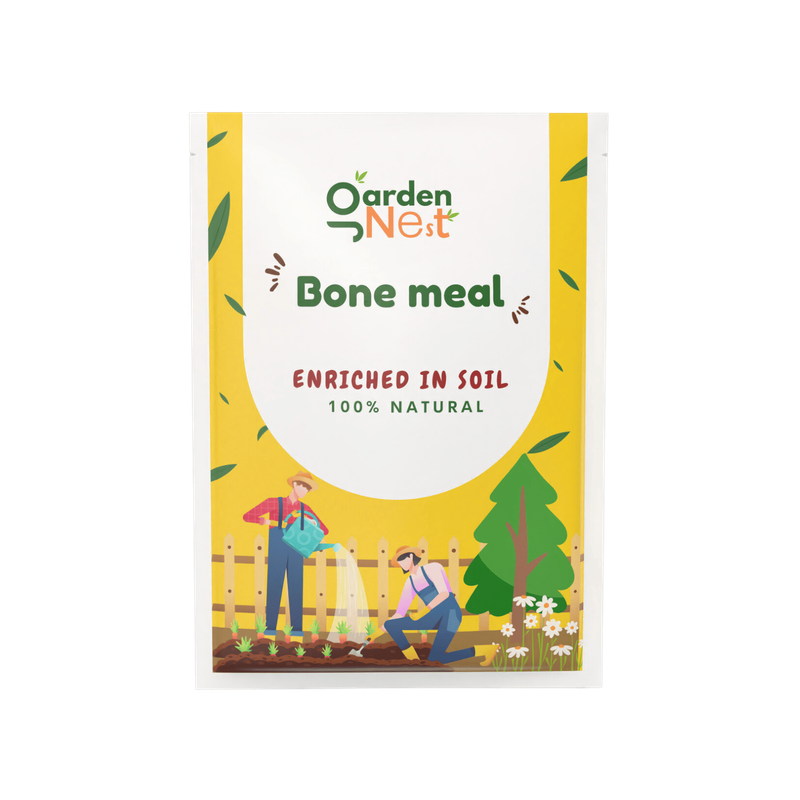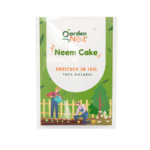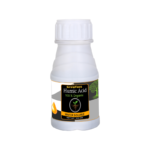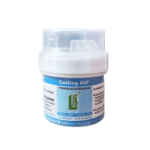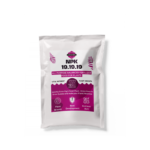Bone Meal Fertilizer & Organic Bone Meal for Plants, Thriving Plants – Garden nest
gardeners and farmers have understood the profound connection between the soil and the vitality of their plants. In the quest for natural and effective ways to nourish the earth, one time-tested ingredient stands out: bone meal. This seemingly simple substance, derived from animal bones, holds a wealth of essential nutrients that can transform your garden, leading to stronger roots, more vibrant blooms, and bountiful harvests.
In today’s world, where sustainability and organic practices are increasingly valued, organic bone meal is experiencing a resurgence in popularity. Gardeners are seeking alternatives to synthetic fertilizers, recognizing the long-term benefits of enriching their soil with natural amendments.
This comprehensive guide will delve deep into the world of bone meal. We’ll explore what it is, its incredible benefits for various plants, how to use it effectively, and address common questions. Whether you’re a seasoned green thumb or just starting your gardening journey, understanding the power of bone meal fertilizer, bone meal fertilizer npk can unlock your garden’s full potential. Get ready to discover why bone meal for plants is a cornerstone of healthy and sustainable gardening.
What Exactly is a Bone Meal?
At its core, bone meal is exactly what its name suggests: ground-up animal bones. These bones are typically sourced from slaughterhouses as a by product of the meat industry, often from cows, pigs, and other livestock. The process of creating bone meal powder for plants involves steaming the bones under high pressure to remove any remaining meat, fat, and other organic materials. This sterilization process is crucial for safety and ensures a pure and nutrient-rich end product. The cleaned bones are then finely ground into a powder, making the nutrients readily available for plant uptake.
The magic of bone meal lies in its rich nutritional profile. It’s a fantastic source of several key elements essential for plant growth, most notably:
- Phosphorus (P): This is the star nutrient in bone meal. Phosphorus plays a vital role in root development, flower and fruit production, and overall plant vigor. It’s particularly crucial during the early stages of plant growth and during reproductive phases.
- Calcium (Ca): Another significant component, calcium is essential for cell wall development, nutrient uptake, and disease resistance in plants. It contributes to stronger stems and leaves.
- Nitrogen (N): While present in smaller amounts compared to phosphorus and calcium, bone meal does contain some nitrogen, which is important for leafy growth and overall plant health.
- Trace Minerals: Depending on the source, bone meal for soil can also contain trace amounts of other beneficial minerals like magnesium, potassium, and zinc, further contributing to soil health and plant nutrition.
It’s important to note the difference between standard bone meal and organic bone meal fertilizer. Organic bone meal comes from animals raised under organic farming practices, ensuring that the bones are free from synthetic pesticides, herbicides, and antibiotics. Choosing organic bone meal aligns with sustainable gardening principles and avoids introducing potentially harmful substances into your soil.
The Benefits of Bone Meal Powder for Plant Health and Growth
- Rich Source of Phosphorus:
- Promotes strong root development: Phosphorus is crucial for the growth of healthy and extensive root systems, enabling better water and nutrient absorption. This is especially beneficial for seedlings and young plants.
- Enhances flowering and fruiting: Adequate phosphorus levels are essential for the development of flowers and fruits, leading to more abundant blooms and better yields in fruiting plants and vegetables.
- Supports overall plant vigour: Phosphorus plays a vital role in energy transfer within the plant, contributing to its overall health and vitality.
- Excellent Source of Calcium:
- Strengthens cell walls: Calcium is fundamental for building strong cell walls in plants, making them more resistant to diseases, pests, and environmental stresses.
- Prevents Blossom End Rot: In vegetables like tomatoes, peppers, and zucchini, sufficient calcium helps prevent blossom end rot, a common issue caused by calcium deficiency.
- Improves nutrient uptake: Calcium aids in the absorption and utilization of other essential nutrients.
- Slow-Release Fertilizer:
- Long-lasting nutrient availability: Bone meal breaks down gradually in the soil, providing a sustained release of phosphorus and calcium over several months. This reduces the risk of nutrient burn and provides consistent nourishment.
How to Use Bone Meal Effectively in Your Garden
Using bone meal correctly is key to maximizing its benefits. Here’s a comprehensive guide on how to incorporate it into your gardening practices:
1. At Planting Time: Setting the Stage for Success
- For Seedlings and Transplants: When planting seedlings or transplanting young plants, add 1-2 tablespoons of bone meal directly into the planting hole. Mix it well with the soil before placing the plant. This ensures that the developing roots have immediate access to phosphorus.
- For Bulbs and Tubers: When planting bulbs like tulips or tubers like potatoes, place 1-2 teaspoons of bone meal in the planting hole beneath the bulb or tuber.
- For Bare-Root Plants: When planting bare-root roses, trees, or shrubs, sprinkle ½ to 1 cup of bone meal into the planting hole and mix it thoroughly with the soil.
Pros and Cons of Using Bone Meal
Pros:
Rich in Phosphorus: Bone meal powder for the plant is the Excellent source for root development, flowering, and fruiting.
Good Source of Calcium: Essential for cell wall strength and disease resistance.
Slow-Release: Organic Bone meal fertilizer Provides a gradual and consistent supply of nutrients.
Organic Option Available: Sustainable and environmentally friendly.
Low Risk of Burning: Gentle on plant roots when used correctly.
Improves Soil Structure (Overtime): Contributes to better aeration and drainage.
Cons:
Slow to Act: Bone meal plant fertilizer Results are not immediate, due to the slow-release nature.
Low in Nitrogen and Potassium: May need to be supplemented with other fertilizers for complete nutrition.
Potential Attractant to Animals: Dogs might be drawn to the smell.
Can Be Dusty: Requires careful handling during application.
Effectiveness Depends on Soil pH: Bone meal for soil who Phosphorus availability is best in slightly acidic to neutral soils.
Real-Life Examples: The Bone Meal Difference
- A Gardener’s Blooming Success: Sarah, an avid rose gardener, struggled with her rose bushes producing few blooms despite healthy foliage. After incorporating bone meal into the soil around her roses in the early spring, she was amazed by the dramatic increase in the number and size of the flowers throughout the season.
- Strong Roots for Veggie Patch: Mark, a vegetable grower, noticed his tomato and pepper seedlings were slow to establish strong root systems after transplanting. Following the advice of a local gardening expert, he started adding bone meal to the planting holes. The subsequent growth was significantly more vigorous, and his plants were more resilient to early-season stresses.
🧪 Comparison Table: Epsom Salt vs. Traditional Fertilizers for Your Vegetable Garden
| Feature / Aspect | Epsom Salt (Magnesium Sulphate for Plants) | Traditional Fertilizers |
|---|---|---|
| Main Components | Magnesium & Sulfate (MgSO₄) – Agricultural Epsom salt fertilizer | Nitrogen (N), Phosphorus (P), Potassium (K), plus other micronutrients |
| Primary Benefits | Improves chlorophyll production, enhances nutrient uptake, boosts seed germination | Provides a broad range of nutrients for balanced plant growth |
| Best For | Epsom salt for garden vegetables, tomatoes, roses, gardenias, lawns (grass), and houseplants | General fertilizing for vegetables, fruits, flowers, and trees |
| Application Methods | Dissolved in water as foliar spray or soil drench (e.g., Epsom salt fertilizing for tomato, Epsom salt for fertilizing plants) | Granular or liquid form applied to soil or as slow-release |
| Usage Frequency | Monthly or as needed for magnesium deficiency (Epsom salt for garden soil) | Depends on type—can be every 2–6 weeks |
| Soil Impact | Improves magnesium content in Epsom salt for garden plants but does not replenish all nutrients | Enriches soil with multiple nutrients but can lead to salt build-up if overused |
| Compatibility | Compatible with organic gardening; good for Epsom salt fertilizer for grass, roses, and gardenia | Available in organic and synthetic forms |
| Cost-Effectiveness | Affordable; ideal as a supplement rather than a complete fertilizer | More expensive; provides complete nutrition |
| Environmental Impact | Low if used appropriately (Epsom salt for garden use); excessive use can lead to mineral imbalance | Can contribute to runoff and pollution if misapplied |
| Common Use Cases | Epsom salt for gardenia, Epsom salt fertilizing for roses, Epsom salt for garden soil (to correct magnesium deficiency) | Broad-spectrum fertilization for soil enrichment and plant development |
Frequently Asked Questions
1. What is bone meal, and how does it benefit plants?
Bone meal is a natural, organic fertilizer made by steaming and grinding animal bones. It is rich in phosphorus and calcium, two essential nutrients that support strong root development, promote vibrant flowering, and improve overall plant health. As an organic bone meal fertilizer, it slowly releases nutrients, ensuring long-lasting support for your plants.
2. How do I use bone meal fertilizer in my garden?
To use bone meal for garden plants, mix it into the soil at the base of the plant. For general use, apply 1 tablespoon per 2 square feet or 3 cups per 100 square feet. For new plantings, place it in the planting hole. For established plants, sprinkle around the root zone and gently rake in. Water well to activate the bone meal fertilizer.
3. What is the NPK value of bone meal, and why is it important?
The typical bone meal NPK ratio ranges from 3-15-0 to 3-20-0. This high phosphorus content (the middle number) makes bone meal powder for plants ideal for encouraging strong root systems and abundant flowers, while the low nitrogen and potassium help avoid overgrowth and nutrient imbalance.
4. Is Gardennest Bone Meal suitable for all types of plants?
Yes, Gardennest Bone Meal is great for vegetables, flowering plants, fruit trees, bulbs, and perennials. It’s particularly useful for any plant that benefits from phosphorus-rich feeding. However, it’s less effective in alkaline soils (pH over 7), so checking your soil’s pH before using bone meal for soil is advisable.
5. Can I use bone meal powder for indoor plants?
Absolutely. Bone meal powder for plants can be used indoors, but apply it sparingly. Mix a small amount into the potting mix and ensure the plant’s soil is slightly acidic to neutral to maximize nutrient absorption. Avoid overuse to prevent odours or pest attraction.
6. How often should I apply bone meal to my plants?
Bone meal fertilizer for plants is a slow-release supplement, so it only needs to be applied once or twice a year. The best times are during planting or early in the growing season. This provides continuous nutrient support throughout the plant’s growth cycle.
7. Is bone meal safe for pets and wildlife?
While organic bone meal is safe for plants, its scent may attract dogs or other animals. Ingesting large quantities can be harmful. To reduce risks, always mix bone meal deeply into the soil and water thoroughly to minimize any lingering smell.
8. Does bone meal improve soil quality?
Yes. Using bone meal for soil enhances fertility by adding phosphorus and calcium. It supports microbial life, improves root penetration, and helps develop a healthier, more productive growing environment for your plants.
9. Can bone meal be used with other fertilizers?
Definitely. Bone meal fertilizer pairs well with compost, vermicomposting, or other organic fertilizers like blood meal. Combining nutrients can create a balanced feeding routine, but be cautious of over-fertilizing. Always follow recommended application rates and consider soil testing.
10. Can I use bone meal for flowering and fruiting plants?
Yes, bone meal is excellent for flowering and fruiting plants due to its high phosphorus content. Bone meal for garden plants like roses, tomatoes, and fruit trees can significantly boost bloom quantity, flower size, and fruit production.
Related Keywords:
- Organic Bone Meal
- Bone Meal Fertilizer
- Bone Meal for Plants
- Bone Meal Powder for Plants
- Bone Meal for Soil
- Bone Meal NPK
- Bone Meal Fertilizer for Plants
- Bone Meal Fertilizer NPK
- Bone Meal for Garden Plants
- Bone Meal Plants Fertilizer
